Talisay Tree
- December 5, 2023
- 0 comment
The Talisay tree, scientifically known as Terminalia catappa, is a majestic and versatile tree that belongs to the Combretaceae family. Native to Southeast Asia, the Talisay tree has found its way into various tropical regions around the world due to its adaptability and aesthetic appeal.


Characterized by its large, glossy leaves that turn vibrant shades of red, orange, and yellow before falling, the tree adds a striking visual element to its surroundings. Its umbrella-shaped canopy provides ample shade, making it a popular choice for landscaping in parks and gardens. Beyond its ornamental value, the Talisay tree holds cultural significance in some regions, often being associated with traditional practices and beliefs.
The tree is also known for its ecological benefits, as its fallen leaves decompose rapidly, enriching the soil and supporting local biodiversity. Additionally, the seeds of the Talisay tree are edible and are sometimes used in traditional medicine. Overall, the Talisay tree stands as a symbol of beauty, resilience, and ecological importance in the diverse landscapes it graces.
| Characteristic | Description |
|---|---|
| Scientific Name | Terminalia catappa |
| Family | Combretaceae |
| Native Region | Southeast Asia |
| Foliage | Large, glossy leaves |
| Foliage Color | Green, turning red, orange, and yellow before falling |
| Canopy Shape | Umbrella-shaped |
| Landscape Use | Popular for landscaping in parks and gardens |
| Cultural Significance | Associated with traditional practices and beliefs in some regions |
| Ecological Benefits | Rapid decomposition of fallen leaves enriches the soil |
| Edible Parts | Seeds are edible and sometimes used in traditional medicine |
| Adaptability | Thrives in tropical regions and is adaptable to various soil types |
| Symbolism | Represents beauty, resilience, and ecological importance |
Botanical Beauty of “Talisay Tree”

The Talisay tree, scientifically known as Terminalia catappa, stands as a botanical marvel with its enchanting beauty. Originating from Southeast Asia, this tree boasts large, glossy leaves that transform into a captivating palette of red, orange, and yellow hues before gracefully descending. The aesthetic appeal of the Talisay tree, with its umbrella-shaped canopy, has made it a sought-after choice for landscaping in parks and gardens around the world.
Woodland Elegance
In the realm of trees, the Talisay stands out with a unique woodland elegance. Its branches stretch out gracefully, creating a majestic silhouette against the sky. The combination of vibrant foliage and the tree’s overall form adds a touch of sophistication to natural landscapes. Whether standing solitary or within a wooded grove, the Talisay tree exudes a quiet charm that captivates the onlooker.

Ecological Importance

Beyond its visual allure, the Talisay tree plays a crucial role in the ecosystem, showcasing its ecological importance. The fallen leaves of the Talisay decompose rapidly, enriching the soil with essential nutrients. This process not only benefits the tree itself but also supports the surrounding flora. The Talisay tree thus becomes a cornerstone in maintaining a healthy and vibrant ecological balance.
Cultivation and Conservation
The cultivation of the Talisay tree has extended far beyond its native Southeast Asia, adapting to various tropical regions worldwide. As the demand for its aesthetic and ecological benefits grows, there is a growing focus on conservation efforts. Conservationists emphasize the importance of preserving this species and its natural habitats to ensure the continued existence of the Talisay tree and the ecosystems it supports.
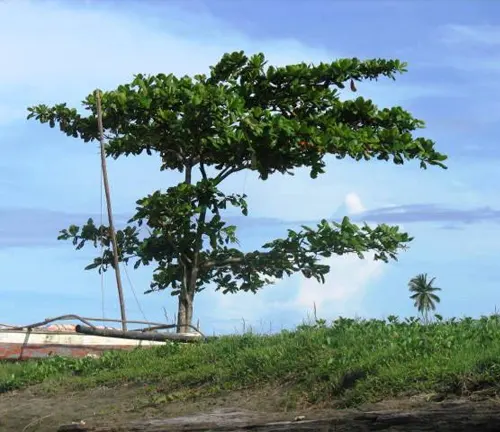
Fragrance
One delightful aspect of the Talisay tree is its subtle fragrance. The air around a flowering Talisay is often infused with a sweet and pleasant scent, creating a sensory experience that adds to its overall appeal. The fragrance varies, adding an extra layer of intrigue to an already captivating tree.
Soil Stabilization
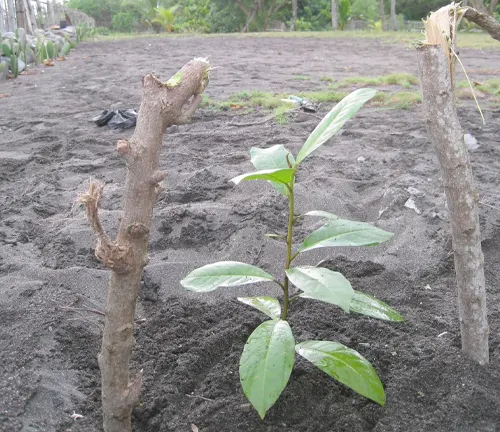
Aside from its visual and olfactory charm, the Talisay tree contributes to soil stabilization. Its extensive root system helps anchor the soil, preventing erosion and maintaining the integrity of the landscape. This quality makes it a valuable asset in areas prone to soil degradation, showcasing the tree’s multifaceted contributions.
Common Uses
In various cultures, the Talisay tree holds cultural significance and finds applications beyond aesthetics. Some regions incorporate the seeds of the Talisay into traditional medicine, highlighting its diverse utility. Additionally, the wood of the Talisay may be used for various purposes, from crafting to construction, further demonstrating its versatility.
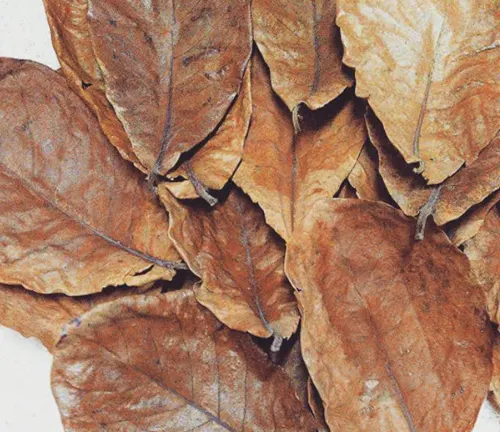
Benefits
In summary, the Talisay tree offers a myriad of benefits, ranging from its striking visual presence and subtle fragrance to its ecological contributions and cultural significance. As we appreciate its botanical beauty, it is crucial to recognize and promote the cultivation and conservation of this remarkable tree for the well-being of our environment and the generations to come.
Different Species
Terminalia catappa
Commonly known as the Indian almond tree or tropical almond, Terminalia catappa is the most widely recognized species referred to as the Talisay tree. It is known for its large, colorful leaves and is native to Southeast Asia.
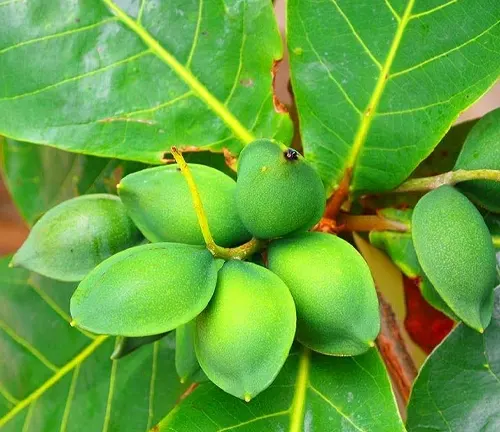

Terminalia ivorensis
Also known as the Ivory Coast almond or Idigbo, Terminalia ivorensis is a hardwood tree native to West Africa. It is valued for its timber, which is used in construction and furniture making.
Terminalia superba
Commonly known as the superb terminalia or limba, Terminalia superba is another hardwood tree native to West and Central Africa. It is prized for its high-quality timber and is used in various woodworking applications.
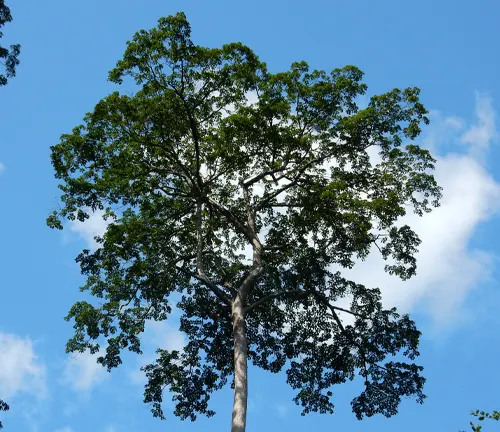
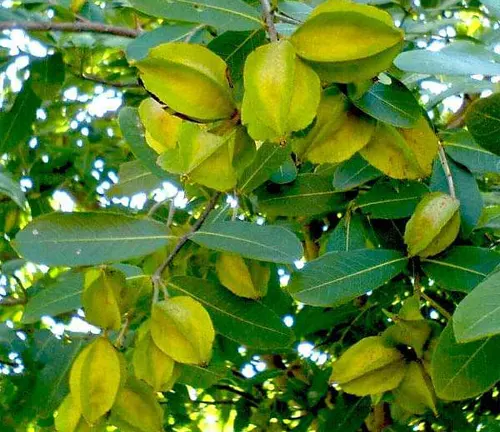
Terminalia arjuna
Native to the Indian subcontinent, Terminalia arjuna is commonly known as arjun tree or arjuna. It is a medicinal plant and is used in traditional Ayurvedic medicine for various health benefits.
Frequently Asked Questions (FAQs)
- What is a Talisay tree?
The Talisay tree, scientifically known as Terminalia catappa, is a tropical tree known for its large, glossy leaves and vibrant foliage. It is native to Southeast Asia and is often cultivated for its ornamental value. - What are the characteristics of the Talisay tree?
The Talisay tree has large, colorful leaves that turn red, orange, and yellow before falling. It has an umbrella-shaped canopy, providing ample shade. The tree is adaptable and thrives in tropical regions. - What is the ecological importance of the Talisay tree?
The fallen leaves of the Talisay tree decompose rapidly, enriching the soil with nutrients. This contributes to soil fertility and supports biodiversity. The tree also helps in preventing soil erosion. - Can the Talisay tree be grown outside its native region?
Yes, the Talisay tree is adaptable and can be grown in various tropical regions worldwide. It is often used in landscaping due to its aesthetic appeal and ability to thrive in different soil types. - Are there different species of Talisay trees?
While “Talisay tree” commonly refers to Terminalia catappa, there are other species within the Terminalia genus, such as Terminalia ivorensis and Terminalia superba. These may also be colloquially referred to as Talisay trees in specific regions. - What is the cultural significance of the Talisay tree?
In some regions, the Talisay tree is associated with traditional practices and beliefs. It may hold cultural or spiritual importance, and its wood or seeds might be used in local rituals or traditional medicine. - Is the Talisay tree edible?
While the tree itself is not typically consumed, the seeds of the Talisay tree are edible and are sometimes used in traditional medicine in certain cultures. - How is the Talisay tree used in landscaping?
The Talisay tree is popular in landscaping for its aesthetic appeal. Its vibrant foliage and umbrella-shaped canopy make it a decorative choice in parks, gardens, and urban green spaces. - Does the Talisay tree have any fragrance?
Yes, the Talisay tree is known for its subtle fragrance, especially when it is flowering. The sweet scent adds to its overall appeal in outdoor settings. - What are the benefits of the Talisay tree?
The Talisay tree offers a range of benefits, including its visual beauty, ecological contributions, soil stabilization, and cultural significance. It is a versatile tree with various applications and positive impacts on the environment.



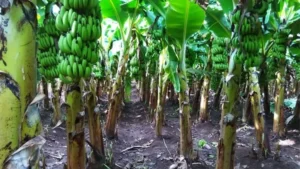




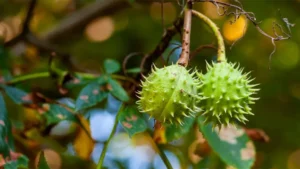





Leave your comment